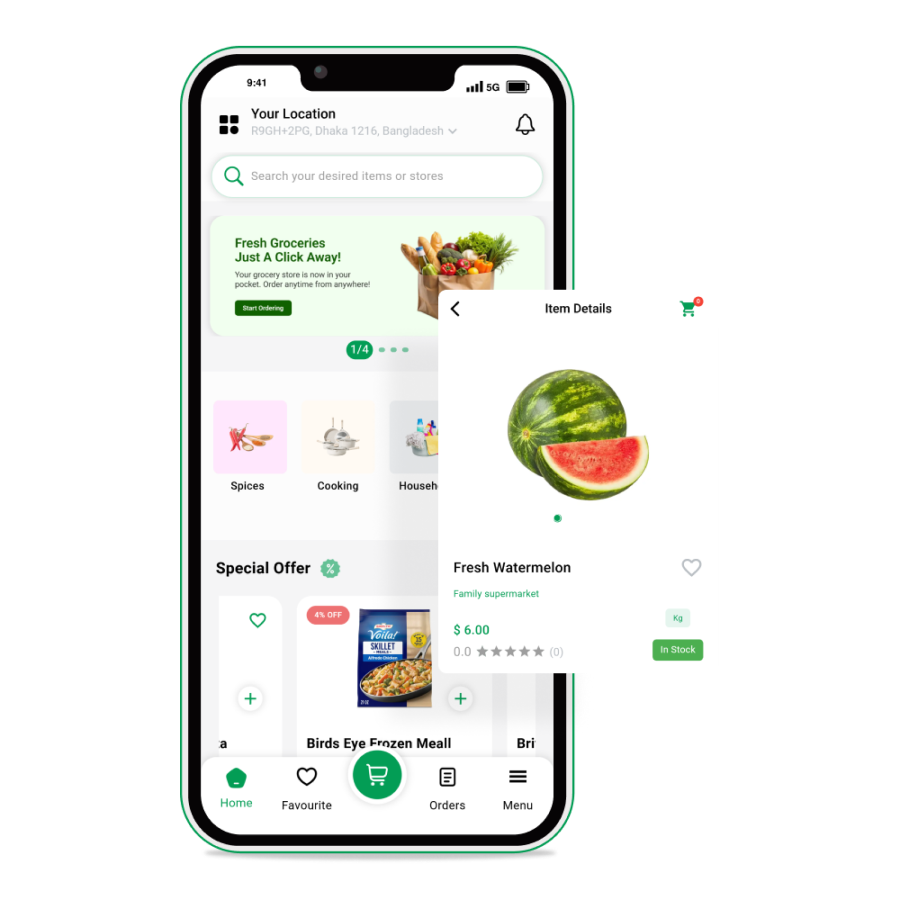Enjoy all services in one platform
We make grocery shopping more interesting.
Find the greatest deals from the grocery stores near you.
Nature & Organic Products
Bring Nature into your home.
Stay home & get your daily needs from our shop
Start You'r Daily Shopping with 6amMart

ادوات منزلية

 Still increasing
Still increasing
